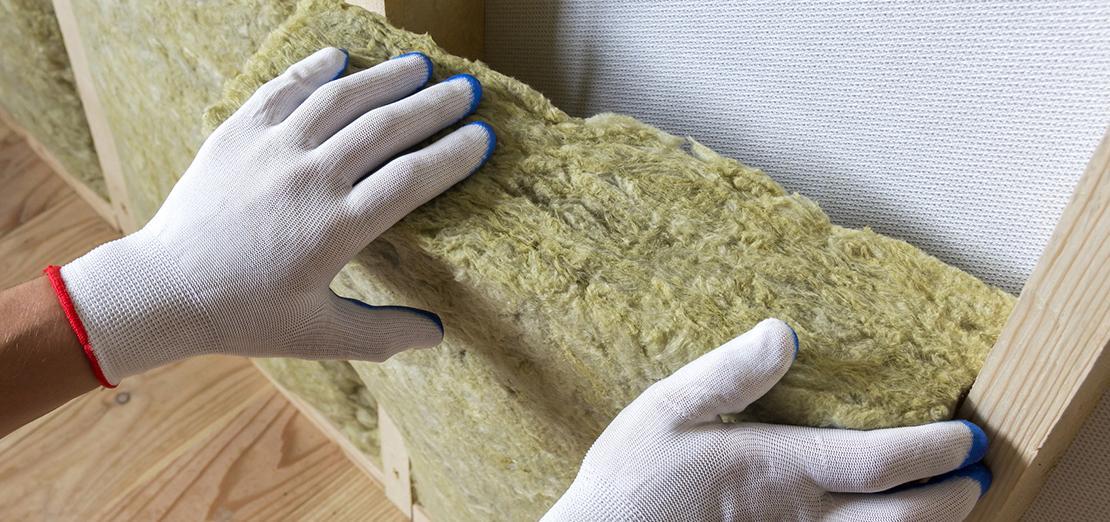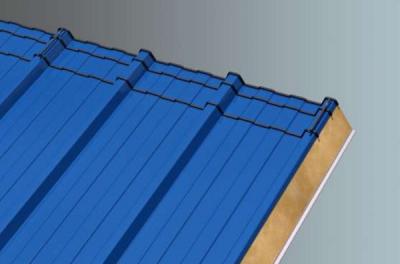Part F - Installing Energy Efficiency Measures
Many existing dwellings are ventilated through infiltration rather than purposeful ventilation. Energy efficiency measures carried out on existing dwellings might reduce infiltration and cause the dwelling to become under-ventilated.
Part F of the Building Regulations 2010
Part F1(1) of the Building Regulations 2010 (as amended) requires new dwellings to have adequate means of ventilation. In the Secretary of State’s view, requirement F1(1) will be met if a new dwelling has a means of ventilation that achieves all of the following:
a) Extracts water vapour and indoor air pollutants from areas where they are produced in significant quantities (e.g. kitchens, utility rooms and bathrooms) before they spread through the building
b) Supplies a minimum level of outdoor air for occupants’ health
c) Rapidly dilutes indoor air pollutants, and disperses water vapour when necessary, in habitable rooms
d) Minimises the entry of external air pollutants
e) Achieves all of the following, as far as is reasonably practicable:
i) Produces low levels of noise
ii) Offers easy access for maintenance
iii) Provides protection from cold draughts
Guidance on how to achieve the above is detailed in Approved Document F for England or Wales.
Energy efficiency measures
Traditionally, UK dwellings have relied on wind‑driven air infiltration, stack-effect and air leakage to provide ventilation to:
- Expel “stale” air (containing pollutants such as moisture and high concentrations of carbon dioxide)
- Supply “fresh” (i.e. external) air
- Maintain overall indoor air quality
The average air permeability of dwelling envelopes in the UK (with fans and background ventilators sealed), as measured by BRE research, is on average 11.5 air changes per hour at 50 Pa, and infiltration and air leakage provide most (approximately three‑quarters) of the required ventilation.
Since the 1970s the installation of double‑glazed, draught‑stripped windows, the draught‑stripping of external doors and the insulation of lofts and cavity walls have gradually improved energy efficiency but also reduced the air permeability of many homes, reducing infiltration and air leakage. In some cases, this has been compensated for by introducing intermittent extract ventilation fans into “wet” rooms (kitchens and bathrooms) to expel moist stale air and by installing background ventilators (most commonly trickle ventilators) in other spaces to provide balancing supplies of fresh air. However, the existence of a ventilation system is not proof that a building is adequately ventilated, and many existing buildings that have undergone energy efficiency improvements are not adequately ventilated.
In light of this, when energy efficiency measures are carried out to an existing dwelling, care needs to be taken to ensure that the work does not reduce the ventilation provision of the dwelling unless it can be demonstrated that the ventilation provision after the work is carried out meets the minimum standards of requirement F1(1).
When carrying out energy efficiency measures to an existing dwelling, an assessment should determine what, if any, additional ventilation provision is needed, based on the estimated impact of the work. The assessment should be carried out by one of the following means:
- Applying the simplified method detailed in paragraphs 3.8 to 3.13 of Approved Document F
- Seeking expert advice, which may include carrying out an air permeability test that follows the procedures given in Approved Document L Volume 1: Dwellings for England or Wales. For more information on air permeability test, you may find this LABC article of interest
- Following the guidance in BSI PAS 2035
This article will focus on the use of the simplified method.
Simplified method
The simplified method is designed to apply to an existing dwelling that is assumed to have adequate means of ventilation through a combination of purpose provided ventilation and infiltration. If the property differs significantly from this assumption, the simplified method may not be suitable and expert advice should be sought.
As common energy efficiency measures are likely to have varying effects on reducing ventilation levels, the simplified method categorises different energy efficiency measures as having a major or minor effect on the ventilation levels of an existing dwelling. Depending on how many major or minor measures are installed, therefore dictates what (if any) additional ventilation provisions should be provided.
When using the simplified method, it is important to include:
- Energy efficiency measures fitted since the original dwelling was constructed, to consider accumulation of measures
- Energy efficiency measures planned
The simplified method considers the following energy efficiency measures; and where specific energy efficiency measures are not included the most similar category should be chosen instead.
| Energy Efficiency Measure | Category of measure |
| Roof insulation | |
| Renewing loft insulation, including effective edge sealing at junctions and penetrations | Minor |
| Loft conversions or works that include changing a cold loft (insulation at ceiling level) to a warm loft (insulation at roof level) | Minor |
| Wall insulation | |
| Installing cavity wall insulation to any external wall | Minor |
| Installing external or internal wall insulation to less than or equal to 50% of the external wall area | Minor |
| Installing external or internal wall insulation to more than 50% of the external wall area | Major |
| Replacement of windows and doors(1) | |
| Replacing less than or equal to 30% of the total existing windows or door units | Minor |
| Replacing more than 30% of the total existing windows or door units | Major |
| Draught-proofing (other than openings)(2) | |
| Replacing a loft hatch with a sealed/insulated unit | Minor |
| Sealing around structural or service penetrations through walls, floors or ceiling/roof | Minor |
| Sealing and/or insulating a suspended ground floor | Major |
| Removing chimney or providing another means of sealing over chimney, internally or externally | Major |
NOTES:
(1.) If the energy efficiency works involve only replacing windows, then the guidance in paragraphs 3.14 to 3.16 of Approved Document F may be followed as an alternative means of demonstrating compliance
(2.) Draught-proofing measures might not, on their own, constitute building work. This work may be controllable under the Building Regulations if carried out as part of other building work
On older properties, identifying what energy efficiency measures have been completed since the original dwelling was constructed may require a certain level of investigation to be undertaken – a competent professional, such as a suitably qualified surveyor or architect, may be able to assist. Also, any relevant energy efficiency measures that may have been completed by a person registered on a Competent Person Scheme, will also need to be considered.
Once the number of major and minor energy efficiency measures have been calculated, the following diagram should then be used to determine the category that the works result in.
If the simplified method results in the work being categorised as Category A, it is likely that the energy efficiency measures have not reduced the ventilation provision of the dwelling below the requirements of F1(1) so no further ventilation provision is necessary.
If the simplified method results in the work being categorised as Category B, it is likely that the ventilation provision of the dwelling has been reduced below the requirements of F1(1). Further ventilation provision should be provided by one of the following means:
- Natural ventilation, by following the system-specific guidance in paragraphs 1.47 to 1.59 of Approved Document F. It is assumed that any existing purpose-built ventilators are in working order and that the equivalent area has not been compromised
- Continuous mechanical extract ventilation, by following the system-specific guidance in paragraphs 1.60 to 1.66 of Approved Document F
- Mechanical ventilation with heat recovery, by following the system-specific guidance in paragraphs 1.67 to 1.73 of Approved Document F. To avoid unintended air pathways, existing background ventilators should be covered or sealed shut
If the simplified method results in the work being categorised as Category C, it is likely that the ventilation provision of the dwelling has been reduced significantly below the requirements of F1(1). Further ventilation should be provided by one of the following means:
- Natural ventilation, by following expert advice for the design, sizing and positioning of ventilators to ensure adequate ventilation provision
- Continuous mechanical extract ventilation, by following the system-specific guidance in paragraphs 1.60 to 1.66 of Approved Document F
- Mechanical ventilation with heat recovery, by following the system-specific guidance in paragraphs 1.67 to 1.73 of Approved Document F. To avoid unintended air pathways, existing background ventilators should be covered or sealed shut
Appendix D in Approved Document F provides a checklist for determining the ventilation provision in an existing dwelling. It may be used before energy efficiency measures are carried out to establish whether an existing dwelling complies with the requirement for adequate means of ventilation.
NOTE: Every care was taken to ensure the information was correct at the time of publication. Any written guidance provided does not replace the user’s professional judgement. It is the responsibility of the dutyholder or person carrying out the work to ensure compliance with relevant building regulations or applicable technical standards.
Sign up to the building bulletin newsletter
Over 48,000 construction professionals have already signed up for the LABC Building Bulletin.
Join them and receive useful tips, practical technical information and industry news by email once every 6 weeks.
Subscribe to the Building Bulletin





Comments
Part F - Installing Energy Efficiency Measures
Submitted 2 years 1 month ago
'....certain level of investigation to be undertaken – a competent professional, such as a suitably qualified surveyor or architect, may be able to assist...' I have yet to meet either a suitably qualified architect who MAY be able to assist.'!
Add new comment